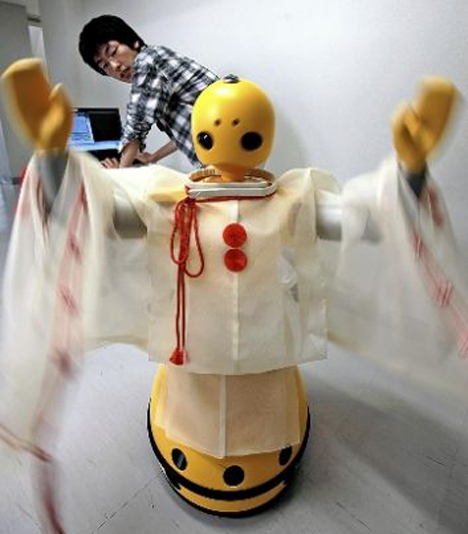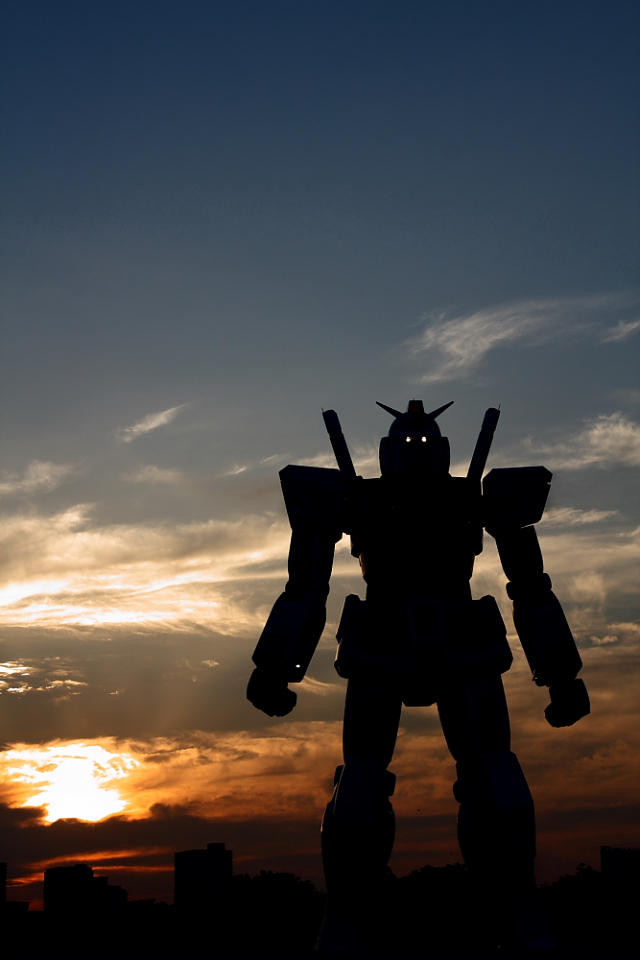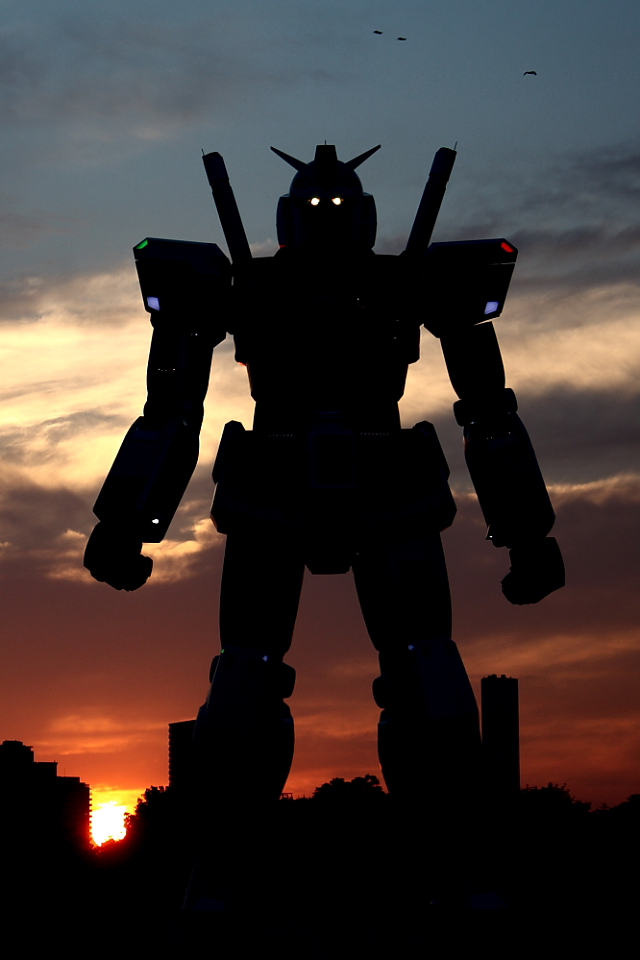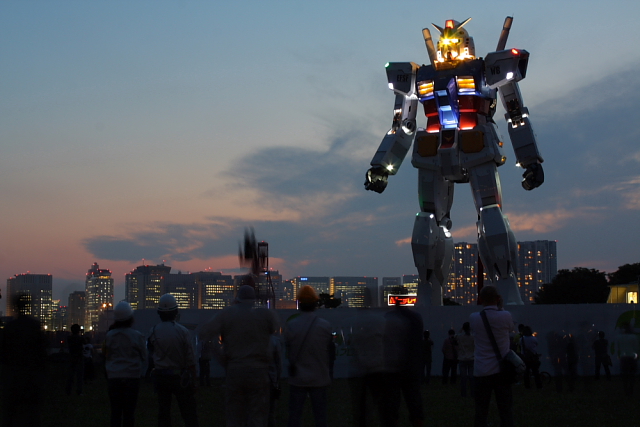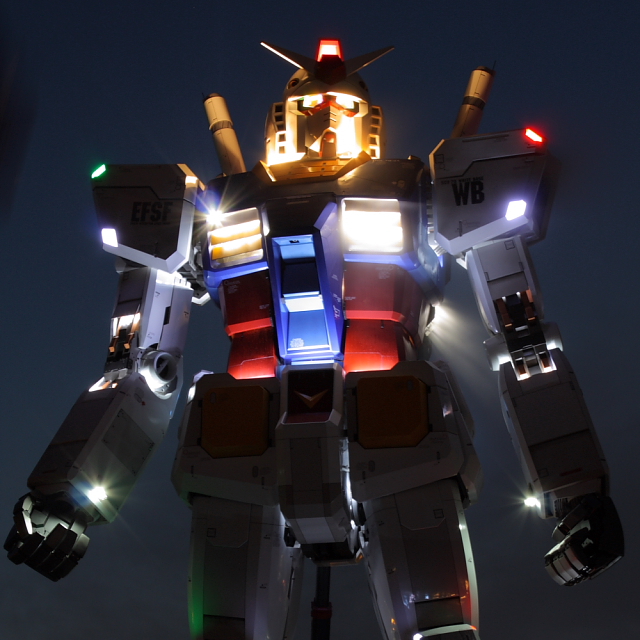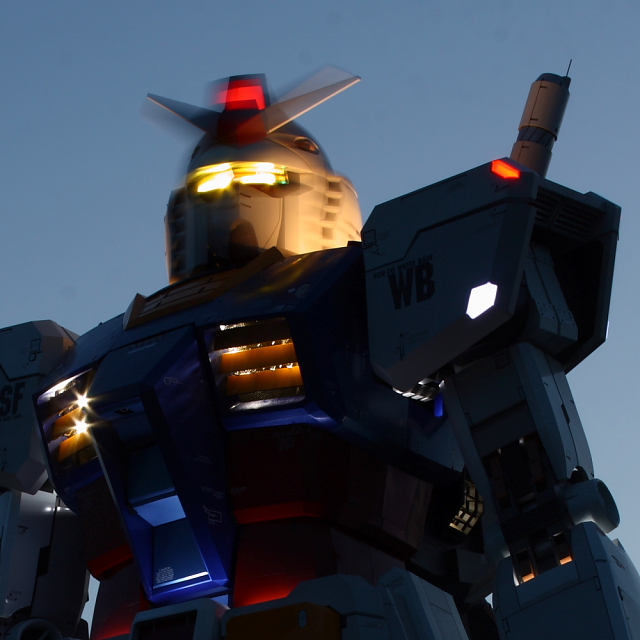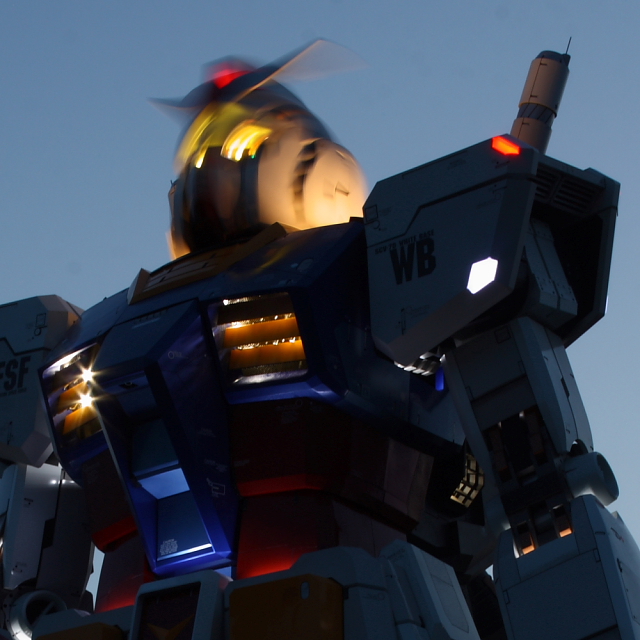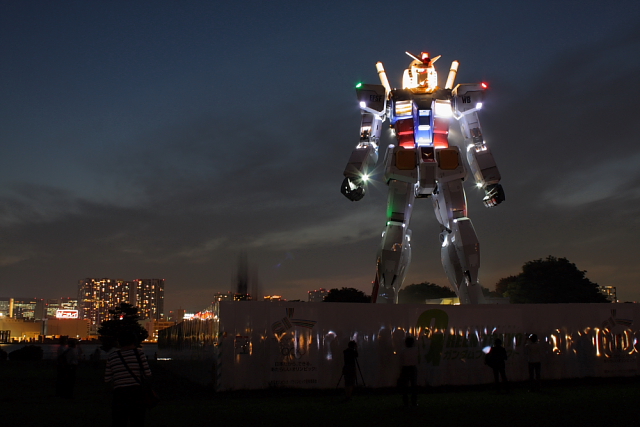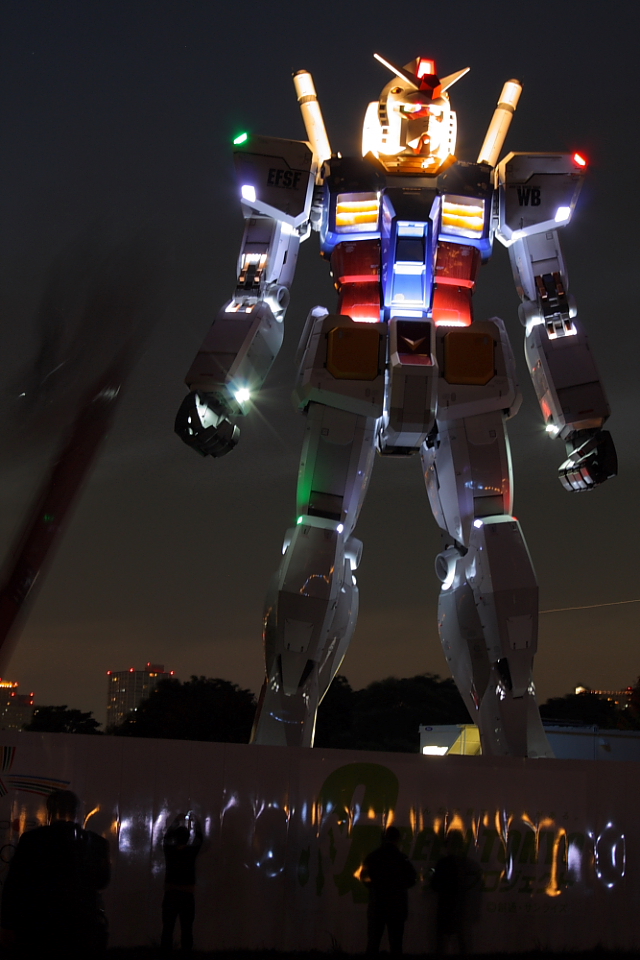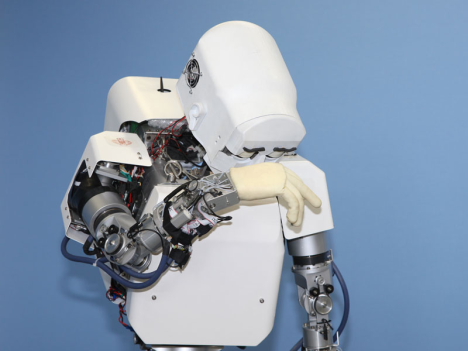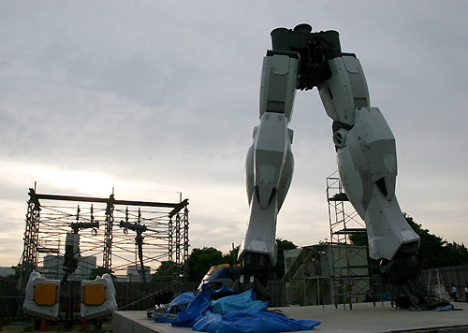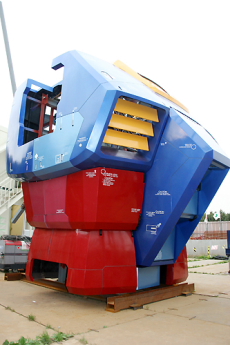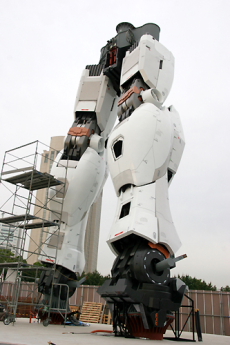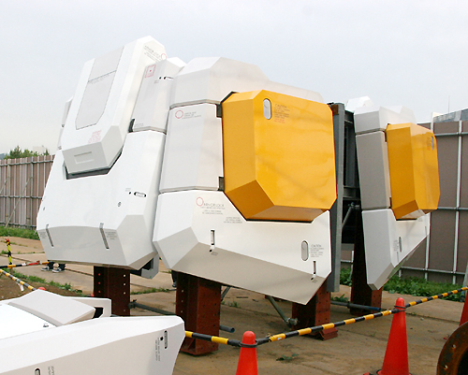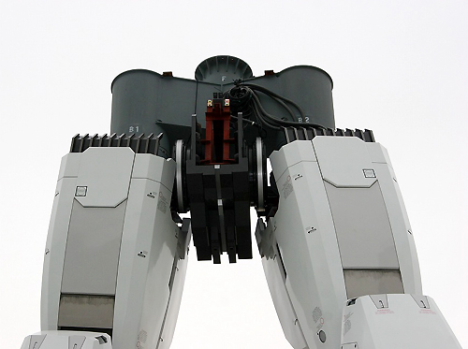What will automobiles look like 50 years down the road? If they turn out to be anything like these concepts from the design studios of four major automakers, we are in for quite a ride.
* * * * *
- Mazda Motonari RX
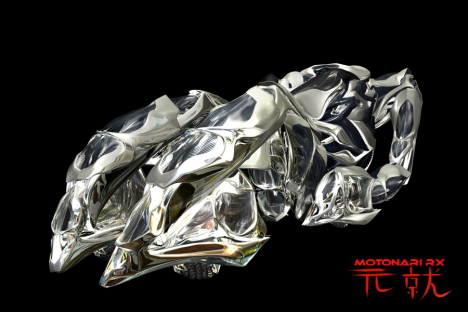
Mazda Motonari RX [+]
In Mazda's vision of the late 2050s, advances in molecular engineering have rendered metal-based manufacturing obsolete. The rise of ubiquitous computing and artificial intelligence drastically accelerates the automotive production cycle. Cars are cheap, lightweight (around 200 lbs, or less than 100 kg), and equipped with intelligent crash avoidance systems that eliminate traffic accidents. However, people still manage to get speeding tickets.
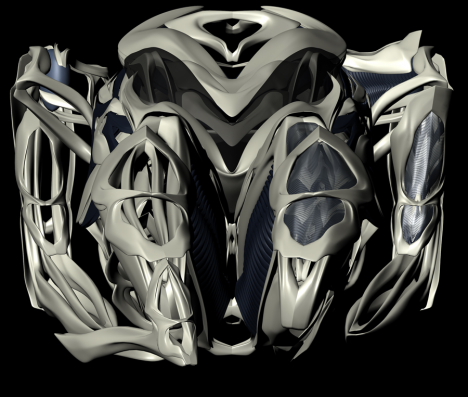
[+]
The Mazda Motonari RX -- which takes its name from the legendary Japanese warrior Mori Motonari -- interfaces seamlessly with the driver to function as an extension of the body.
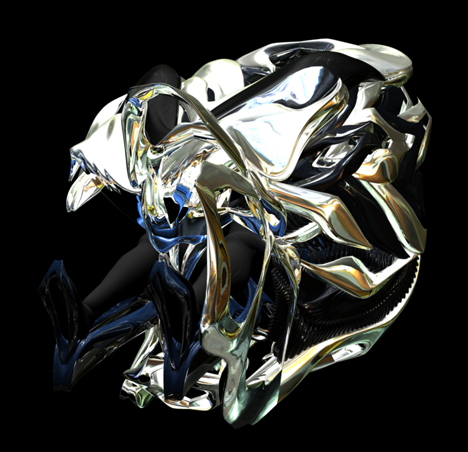
The vehicle drives sort of like a street luge. Acceleration and direction is determined by two armrest mounted control points, and the vehicle's exoskeletal frame shape-shifts in accordance with the position of the driver's arms and legs when enveloped in the seat.
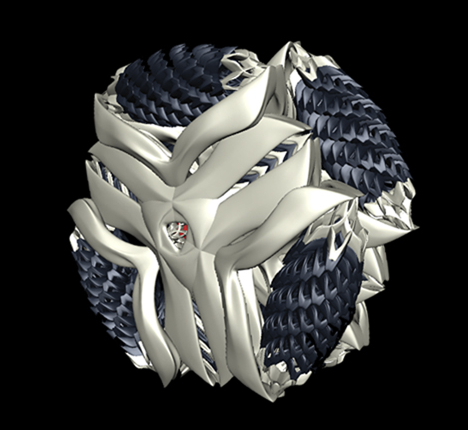
Omni wheels
Four omnidirectional wheels allow 360 degrees of movement, and the tread expands or contracts to suit the driving conditions.
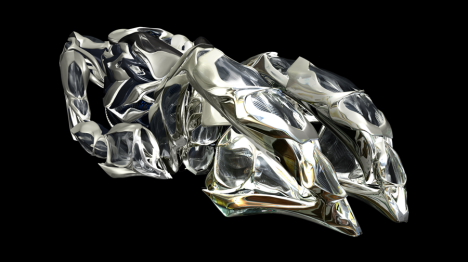
[+]
A "haptic skin" suit consisting of millions of microscopic actuators enables the driver to experience the road psycho-somatically while receiving electrical muscle stimulation from the onboard AI guidance system (or other remotely located drivers).
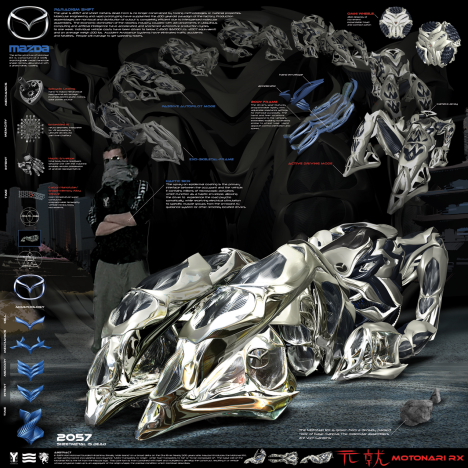
[+]
The vehicle's entire structure is comprised of a 100% reprototypable, carbon nanotube/shape memory alloy weave with a photovoltaic coating, which allows the vehicle to mimic the driver's body movements while powering the in-wheel electrostatic motors. [More]
* * * * *
- Toyota Biomobile Mecha
In Toyota's vision of the late 2050s, cities have developed vertically due to limited area on the ground, leading the transportation industry to develop new vehicles capable of navigating vertical space.
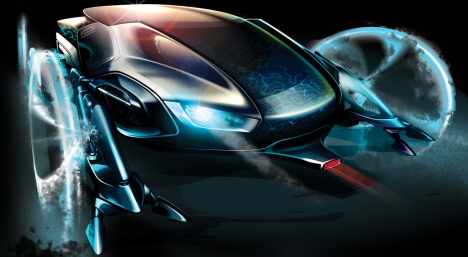
Toyota Biomobile Mecha [+]
Toyota's Biomobile Mecha, a shape-shifting vehicle with nano-laser wheels, can read and adapt to changes in the environment and travel vertical pathways by means of biomimetic feet with powerful suction.
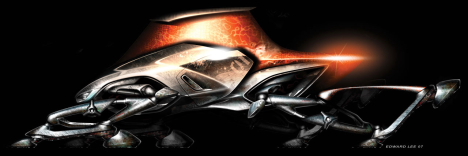
[+]
In addition, the Biomobile Mecha is powered by pollution. A special skin derives energy from harmful substances in the air, so the vehicle never runs out of fuel (as long as the future skies remain polluted) and restores balance to the environment while it goes.

[+]
The real-time strategic navigation planning system, which reads the environment via a 3D scanner, gives the vehicle "instincts" that enable it to autonomously adapt to the driving environment.
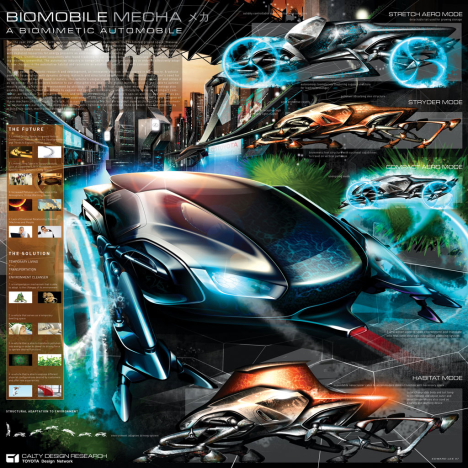
[+]
Advanced nanotechnology enables the vehicle to expand and contract its structure horizontally and vertically as needed, allowing it to serve as a compact commuter, an aerodynamic performance vehicle, or even as a temporary dwelling. [More]
* * * * *
- Nissan OneOne
In Nissan's vision of the 2050s, robots have become an integral part of our lives, blurring the line between humans and machines. The Nissan OneOne combines personal mobility with the family robot concept.
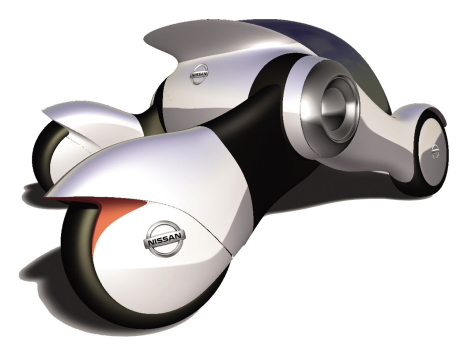
[+]
Billed as the ultimate pet, the Nissan OneOne (pronounced "wan-wan," the Japanese sound for a barking dog) is a friendly, helpful member of the family of the future. Able to operate autonomously without a driver, the GPS-guided vehicle can help out by picking up the dry cleaning, fetching the groceries, and taking the kids to school.
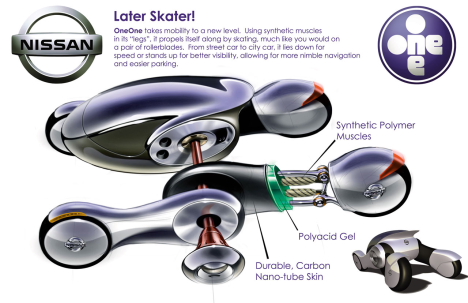
[+]
OneOne propels itself forward by flexing and relaxing synthetic polymer muscles in its "legs," much as you would if skating on roller blades.
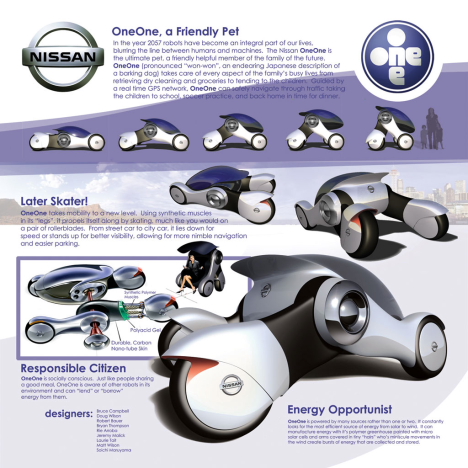
[+]
The vehicle can also assume various positions depending on the driving environment. It reclines to achieve greater speed, and it stands up to increase visibility and squeeze into tight spaces. [More]
* * * * *
- Honda 124 (One to the Power of Four)
In Honda's vision of the 2050s, people have flocked back to the suburbs, fueling consumer demand for a truly flexible commuter vehicle.
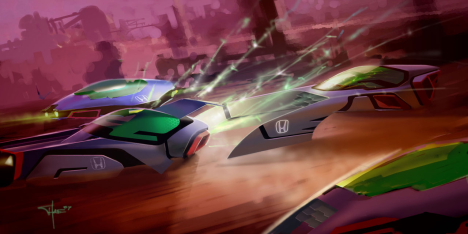
Honda 124 [+]
The solar-hybrid powered Honda 124 (One to the Power of Four) is an energy-efficient, modular vehicle that can separate into four different fully functional units, each uniquely suited for specific driving conditions.
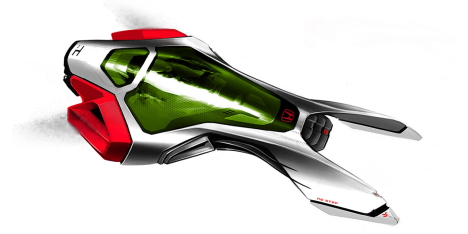
[+]
A combination of robotics, artificial intelligence and molecular engineering (which enables the body panels to be reshaped according to use) allow each module to instinctively reconfigure itself and operate as a fully functional unit. Two of the modules are suitable for short-distance inner-city driving, while the other two are ideal for longer distances at higher speeds.
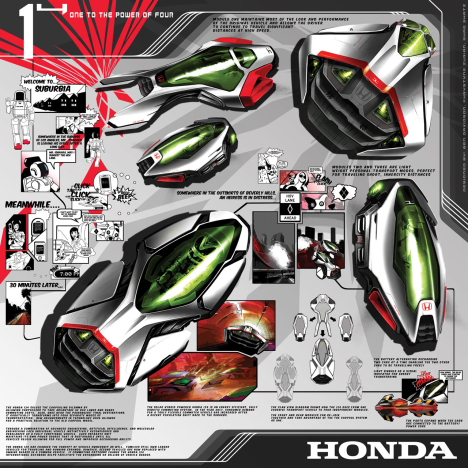
[+]
Because the Honda 124 consists of multiple units that can be joined together, carpoolers can take advantage of HOV lanes and share commuting costs. [More]



 Although much less hurried than her flesh-and-bone catwalk peers, the HRP-4C strolled smoothly up and down the 10-meter runway, struck various poses, and gazed sidelong at the delighted audience.
Although much less hurried than her flesh-and-bone catwalk peers, the HRP-4C strolled smoothly up and down the 10-meter runway, struck various poses, and gazed sidelong at the delighted audience. 